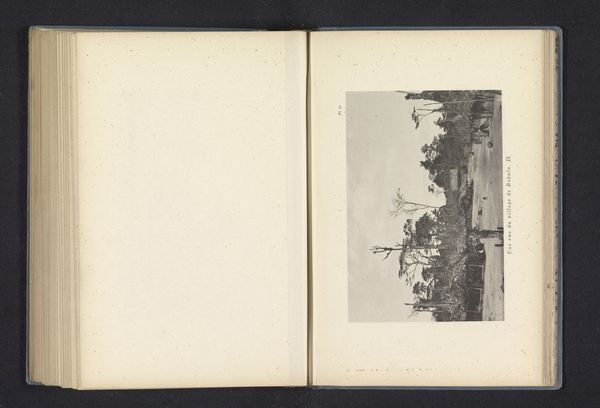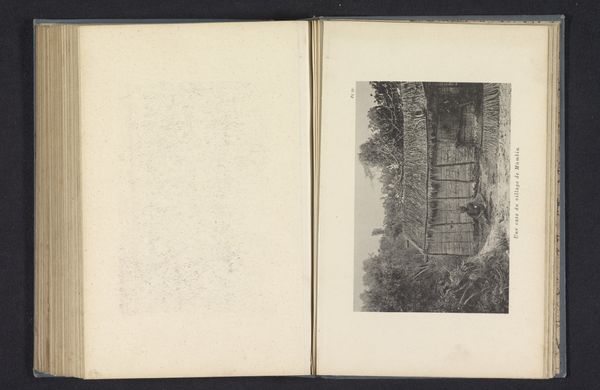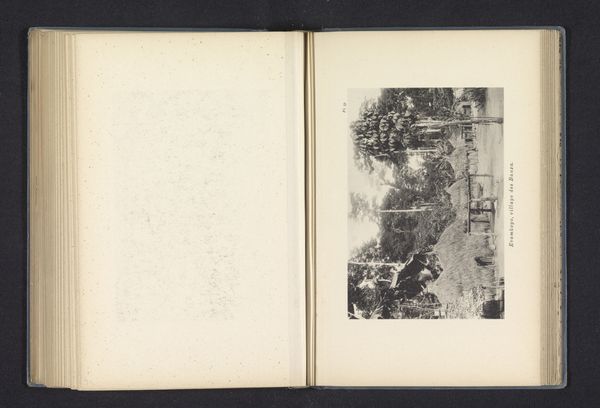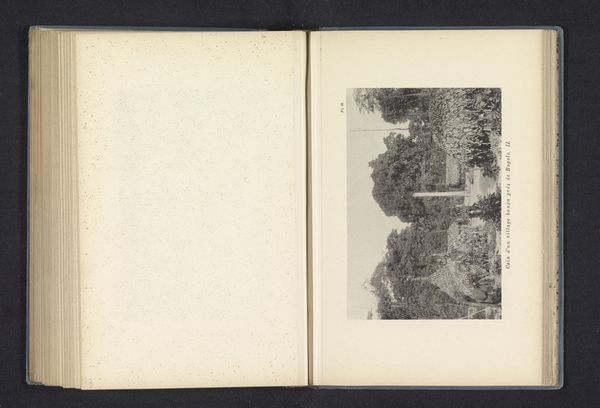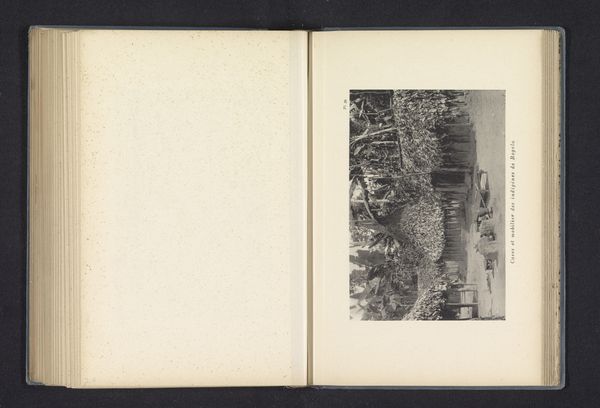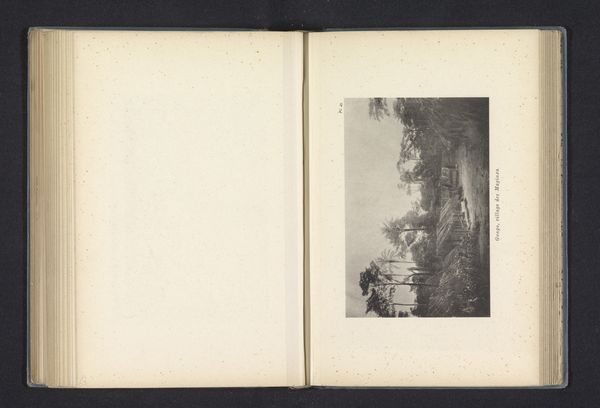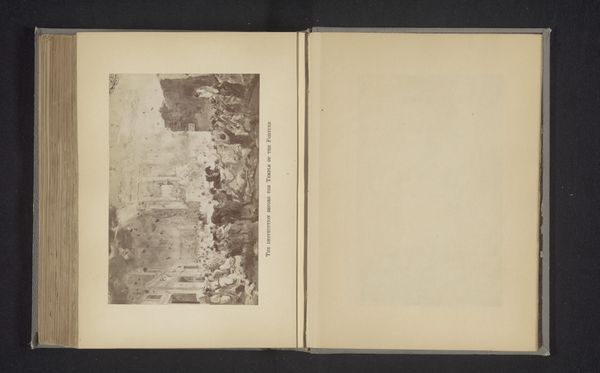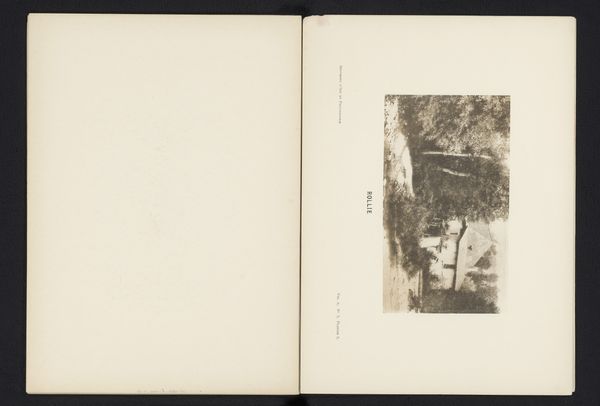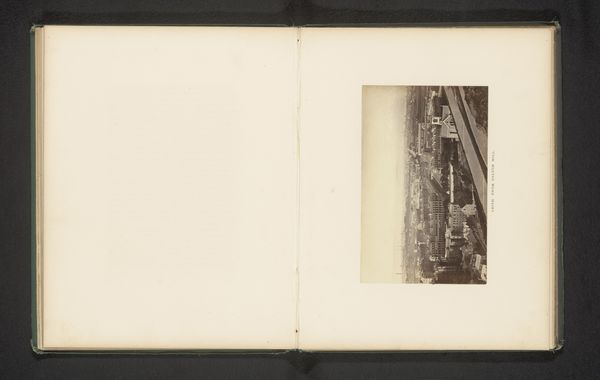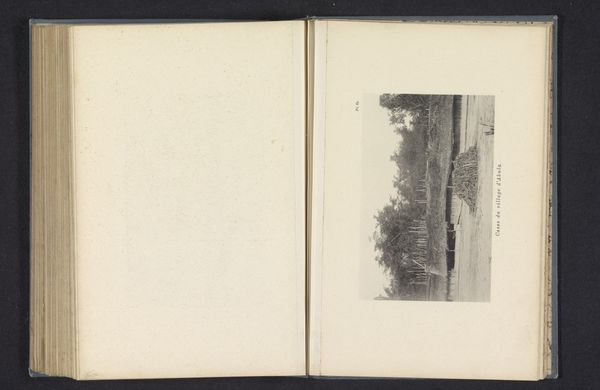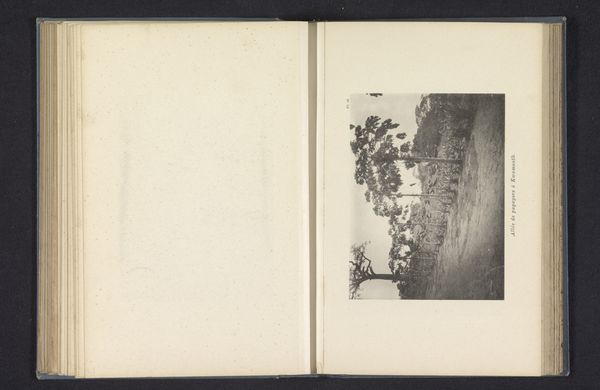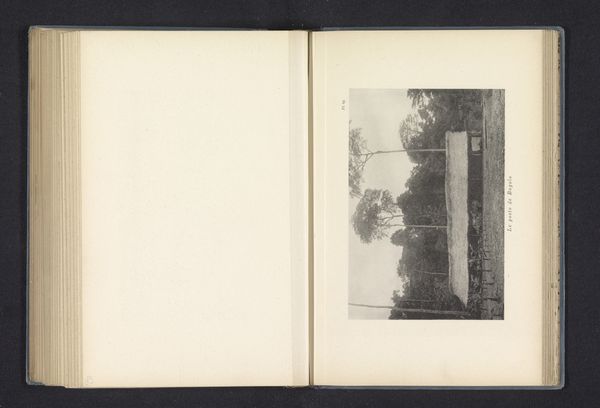
photography, albumen-print
#
african-art
#
16_19th-century
#
landscape
#
photography
#
albumen-print
#
realism
Dimensions: height 109 mm, width 162 mm
Copyright: Rijks Museum: Open Domain
Curator: Immediately, I'm struck by the density of this composition—the trees seem to almost swallow the figures standing within the village. Editor: Indeed, a study in contrasts and shades! We're looking at an albumen print from 1896 titled "Gezicht op een straat te Mbinga" which translates to "View of a street in Mbinga" by Franz Thonner. Its origins place us squarely within the context of late 19th-century African exploration and colonial photography. Curator: Colonial, yes, and inevitably loaded. The figures standing somewhat statically invite me to wonder at the intended symbolic exchange between the photographer and his subject. Are they merely documenting, or is there a conscious effort to freeze and preserve an idea of “otherness"? Editor: The albumen process itself speaks to the materiality and labor involved, wouldn't you say? Each print would have demanded careful coating, exposure, and development – not to mention the social framework necessary to acquire the original negative from Thonner’s camera. Each step imprints human effort into that image. Curator: Certainly, and beyond the labor of crafting a photographic print, let's consider the context: what meaning does such an image hold for people both then and now? It speaks to representation, not simply of the village street itself, but of power dynamics between the European gaze and the people of Mbinga. What were the semiotics circulating in the collective unconscious during this era, I wonder. Editor: From a materialist view, how often was an albumen print handled? It likely belonged to someone with enough economic privilege. What value was then placed upon the represented landscape, compared to its practical use for those who dwelled within? What commodities might have traveled these literal streets within the frame? Curator: Yes, layering our understandings reveals so much. While this seems ostensibly like a benign photograph of a street, undercutting its literal "realism," these complex threads give this albumen print profound resonance for our contemporary moment. Editor: I concur. Seeing these images in their historical context deepens our comprehension of the materials involved – socially, historically, physically.
Comments
No comments
Be the first to comment and join the conversation on the ultimate creative platform.
